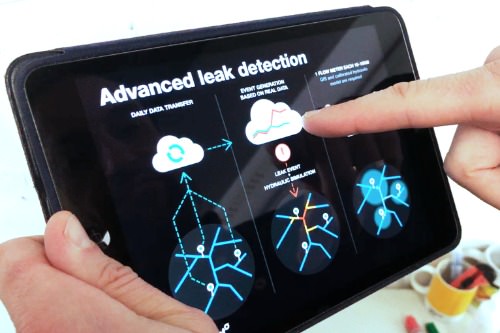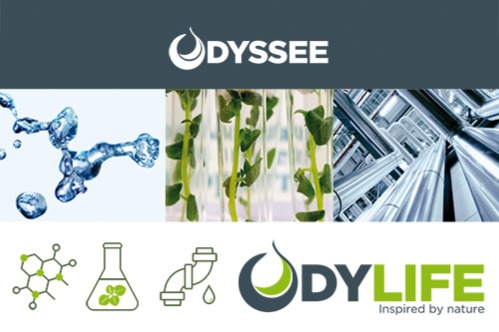News - March 22, 2021
World Water Day: Challenges and Solutions for Water Scarcity


Written by Expert: Paulina Janiak 5 min read
To celebrate World Water Day, Paulina Janiak discusses the urgent need for sustainable use and management of water resources and what can be done to address the challenge of water scarcity. Paulina is part of the Expert Community at the Solar Impulse Foundation.
Barcelona, Beijing, Cape Town, Istanbul, Rome… the list goes on. Over the last decade all these cities faced a severe water crisis, which forced authorities to introduce water rationalisation measures. Every year, around one-quarter of people globally live in areas under significant water stress, i.e. where almost all available water resources are being used. This phenomenon goes far beyond regions characterised by arid climates. In fact, freshwater withdrawals exceed available resources also in temperate climate zones that are usually associated with regular precipitation, such as in the Netherlands, Belgium and Germany. Water shortages pose risks to people’s well-being and food security, and negatively affect economic activity. The combined impact of climate change and a projected increase in water demand (55% increase by 2050) can only aggravate the problem, amplifying existing social inequalities, threatening cultural heritage and even leading to potential armed conflicts. Indeed, over recent years, the World Economic Forum has regularly reported water crises among the top five perceived global risks in terms of impact.
In this context, it is no surprise that the challenge of water stress and water resources protection has become a cross-cutting policy theme. For instance, in the European Union, key strategic documents (for example on climate adaptation, farm-to-fork, and biodiversity) underline water’s core role in climate change mitigation and adaptation efforts. Over the next decade, a number of measures and actions will be needed to ensure efficient and sustainable water use: water saving technologies for industry and agriculture, water efficiency requirements in labelling schemes, nature-based solutions for water-related ecosystem services, water resource allocation, water-permitting systems, and water quality monitoring technologies to name just a few.
Research and innovation can play a key role as an enabler for addressing water-related challenges and attaining water sustainability goals. Let’s have a look at some of the corresponding focus areas and trends, bearing in mind that they are strongly interlinked and often overlap.
IT-based solutions
‘Digital water’ involves the application of the latest technologies - such as big data analytics, artificial intelligence (AI), blockchain, digital image recognition, smart sensors and Internet of Things (IoT) - to reinforce integrated water resources management decision support systems, and link information and assets operation along the whole water value chain (from source, to treatment, transfer and use). Digital water has the potential to significantly improve efficiency and performance of water supply and irrigation systems and enhance disaster and risk management. Solutions in this field have multiplied lately and include a wide range of approaches.
AI-powered tools for water mains failure prediction, improved management of water distribution networks and of urban flooding events are increasingly common, with the InteliPipes, BuntBrain and Centaur Solutions all featuring in the Efficient Solutions portfolio.). This approach can also be applied in combination with blockchain and associated technologies to improve product traceability and sustainability footprint calculations, such as the TrusTrace solution or initiatives trading water rights (e.g. Water Ledger pilot project in Australia). AI-powered, data analytics and software-based decision support tools for precision agriculture, such as the Efficient Solutions Gigrow, Hortau', and SinaSens Smart Agri, are also playing an important role.
Circular solutions
The circular water economy aims to optimise the amount of resources (water, energy, minerals and chemicals) used and extracted in water systems, whilst generating socio-economic value and preserving and enhancing natural capital (e.g. river restoration, pollution prevention etc). This is achieved through an improved alignment of human-made water cycles with natural systems, applying measures such as water use avoidance (by rethinking products and services), reduction (increased efficiency and improved resource allocation/management), reuse (closed loop operations), recycling and replenishment (return to the basin). Example solutions include:
- Recovering magnesium, calcium, salts, heat and fresh water from industrial processes, e.g. in silica production and textile manufacturing, to reuse them internally or in other industries
- Implementing a multi-stage wastewater treatment process in the petrochemical industry to reuse reclaimed wastewater internally
- Turning nutrient-rich, i.e. with a high phosphorus and nitrogen content, food processing and urban wastewater into green fertiliser
A number of labelled Solutions are found in the circular water category, including E-METS, a novel thermal water separation technology for advanced desalination, lithium mining and industrial wastewater treatment; and Celium® BioFabricated Leather, produced from agro-industrial waste with a minimal use of water and grown with recombinant bacteria and sugar-rich organic waste.

Addressing new pollutants
Contaminants of emerging concern (CEC) include substances such as pharmaceuticals, newly registered pesticides, industrial plastic additives, personal care products and new flame retardants. These water pollutants usually occur in low concentrations but their potential adverse effects and long-term impact on human health and the environment are still poorly understood. In addition, their removal in conventional water and wastewater treatment processes is not very efficient, which calls for developing advanced technologies to improve CEC monitoring, prevention and treatment. Examples of such novel approaches include bio-diagnostics; advanced oxidation processes, photobioreactors and nanotechnologies for water and wastewater treatment; and smart membrane technologies for pollutant removal from water and wastewater. Examples of labelled Solutions include novel mineral and polymer adsorbents for reducing organic and /or inorganic micropollutants wastewaters, such as Capterall, MagnetoSponges and Biosfilter).

Nature-based solutions
Nature-based solutions in water management involve approaches which are inspired and supported by nature, while being cost-effective, low-maintenance and often help with mitigation and adaptation to the adverse impacts of climate change. They can comprise hybrid green, blue and grey infrastructure for water reuse and recycle, water retention and groundwater recharge, but also biomimicry (imitation of natural processes, forms, and systems) as a design concept to introduce resource circularity into value chains. A number of labelled Solutions draw on nature-based approaches for water management and treatment, including:
Stormwater management solutions, targeting zero-rainwater-discharge in cities to overcome floods and mitigate urban heat islands while reintroducing biodiversity (Skywater, Bocage Urbain and OASIS)
Plant-based wastewater treatment plants, which simultaneously sequester CO2, cool open space areas and produce biomass (Bamboo for Life)
Bio-based filters for heavy metals and phytosanitary pollutants removal from water (Biosorb)
Plant-based anti-scaling substance for cooling towers, steam boilers, closed loops, reverse osmosis and saltwater de-salinisation (ODYLIFE)

The existence of numerous impactful and innovative solutions which successfully address the water scarcity challenge is evident. The challenge is now to gain wide recognition of their benefits by governments and businesses. By taking forward these Solutions to governmental and corporate decision-makers, we can deliver clean, profitable options for sustainable water use and management across the world. This World Water Day, let’s recognise the value that the Solar Impulse Foundation’s labelled Solutions can play in advancing action on climate change, water scarcity and other environmental issues to facilitate a transition to a sustainable future.

Written by Expert: Paulina Janiak on March 22, 2021


















